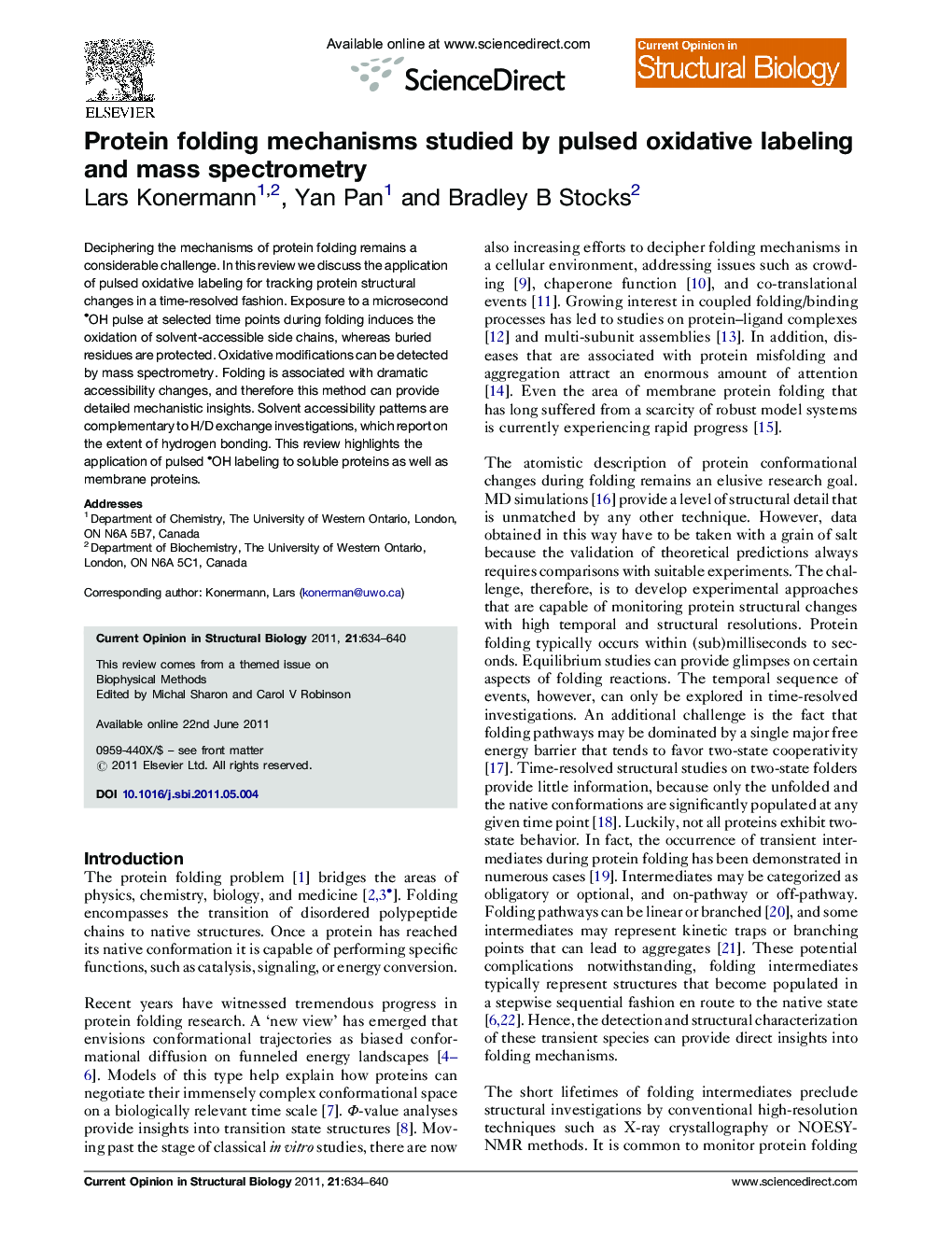| Article ID | Journal | Published Year | Pages | File Type |
|---|---|---|---|---|
| 1979241 | Current Opinion in Structural Biology | 2011 | 7 Pages |
Deciphering the mechanisms of protein folding remains a considerable challenge. In this review we discuss the application of pulsed oxidative labeling for tracking protein structural changes in a time-resolved fashion. Exposure to a microsecond OH pulse at selected time points during folding induces the oxidation of solvent-accessible side chains, whereas buried residues are protected. Oxidative modifications can be detected by mass spectrometry. Folding is associated with dramatic accessibility changes, and therefore this method can provide detailed mechanistic insights. Solvent accessibility patterns are complementary to H/D exchange investigations, which report on the extent of hydrogen bonding. This review highlights the application of pulsed OH labeling to soluble proteins as well as membrane proteins.
► The characterization of protein folding intermediates provides insights into folding mechanisms. ► The short lifetimes of folding intermediates pose experimental challenges. ► We discuss the application of pulsed oxidative labeling in kinetic folding experiments. ► Side chain solvent accessibility data yield structural information on folding intermediates. ► This mass spectrometry method is applicable to soluble and membrane proteins, as well as complexes.
